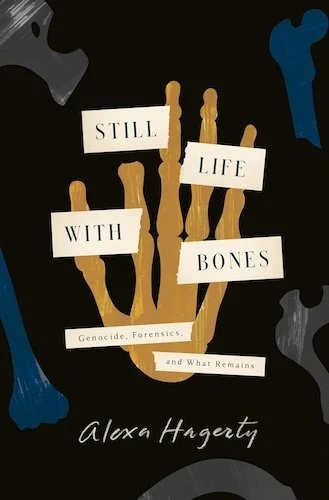Still Life With Bones
Alexa Hagerty’s Still Life with Bones: Genocide, Forensics, and What Remains (Crown) astonished me. For a book with the word “genocide” in the title, I was surprised by the one word that kept coming to mind as I read: tenderness. Hagerty is an anthropologist, and in these pages she works with forensic teams in Guatemala and elsewhere to better understand “how bones bear witness to crimes against humanity and how exhumation can bring families meaning after unimaginable loss.”
The work of forensic anthropology in countries with wartorn pasts is vital precisely because of decades of cruelty and carelessness. But those who devote themselves to this difficult work do so, day after day, with tenderness and care.
“Once I watched Cati measure a cranial fracture. When she finished, she ran her palm along the frontal bone, touching the skull just like you’d stroke a sick kid’s forehead. It was an action with no scientific purpose, an unmistakable gesture of comfort. She did it without thinking. I could have easily missed her fleeting touch, distracted by studying the fracture pattern. Or I could have seen it but not registered its significance because I already ‘knew’ what she was doing: analyzing a bullet trajectory, not comforting someone. My feeling of surprise could have dispersed without a trace. But I caught it and afterward noticed many subtle and ephemeral touches of care: adjusting the angle of bones to a more ‘comfortable’ position, patting a skull and saying ‘pobrecito.’”
